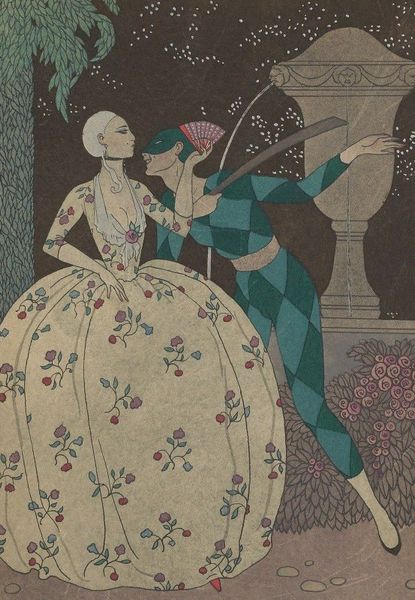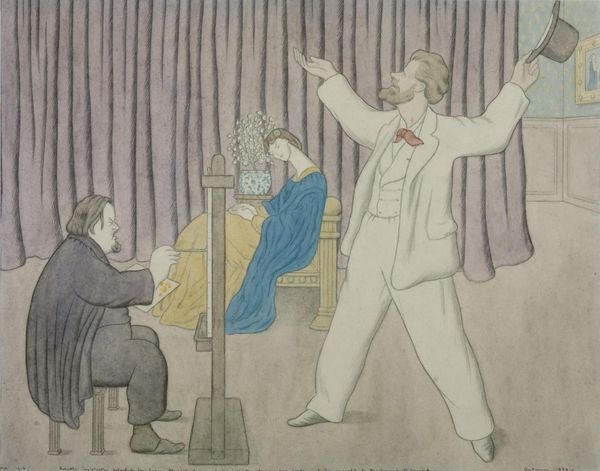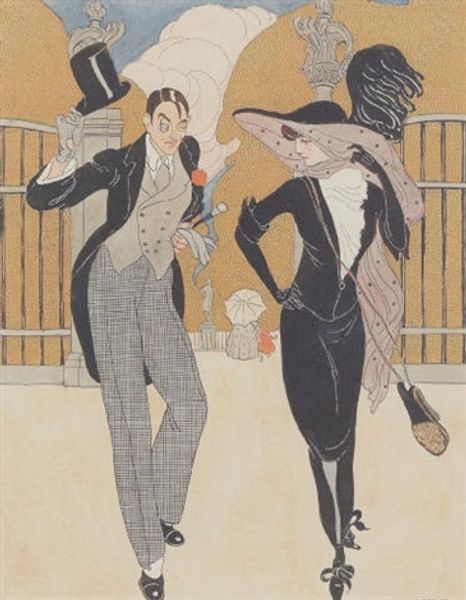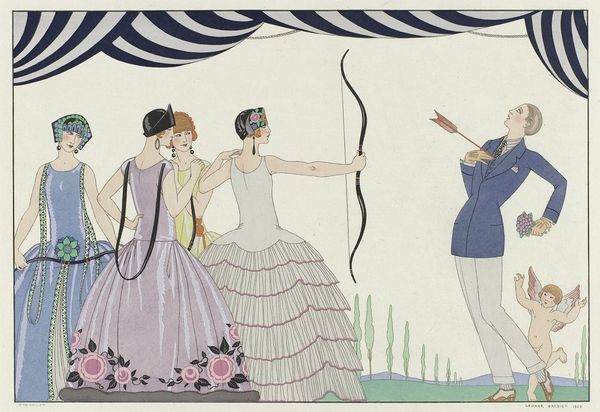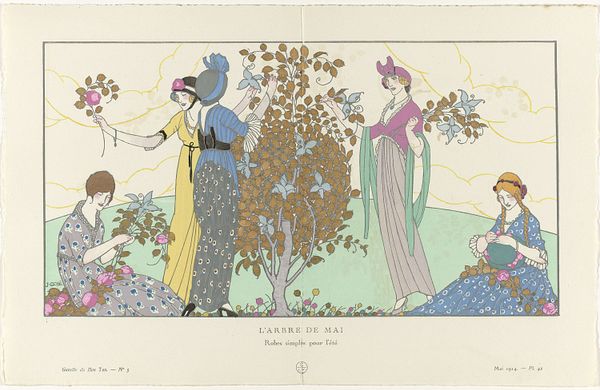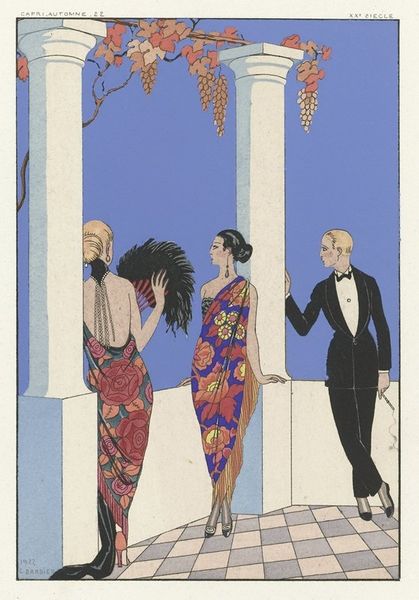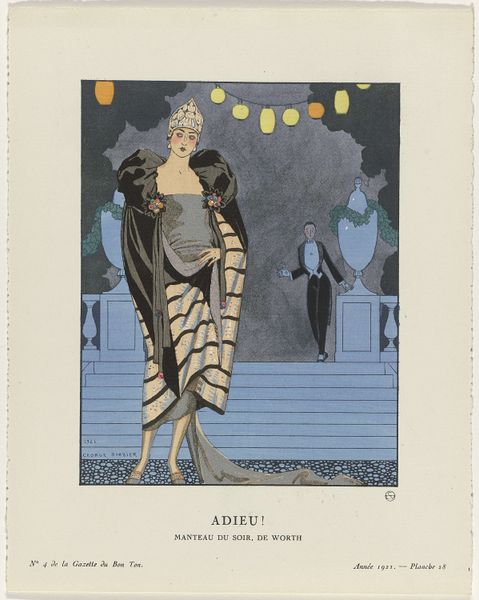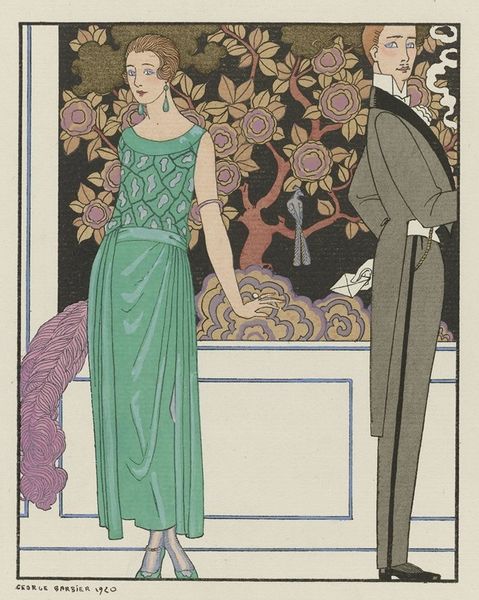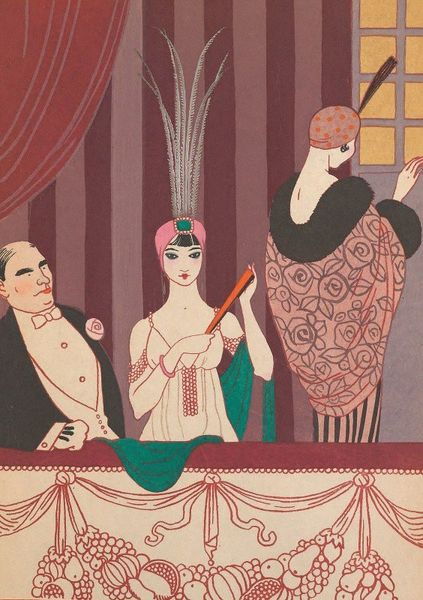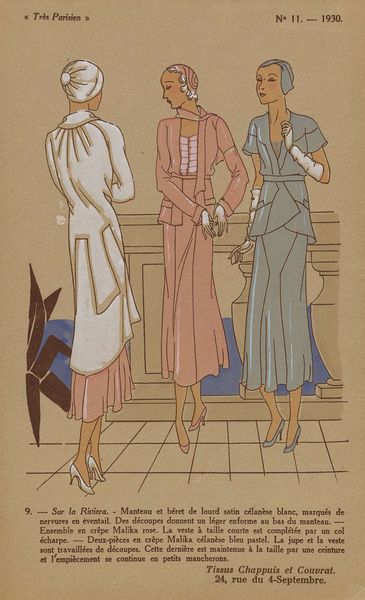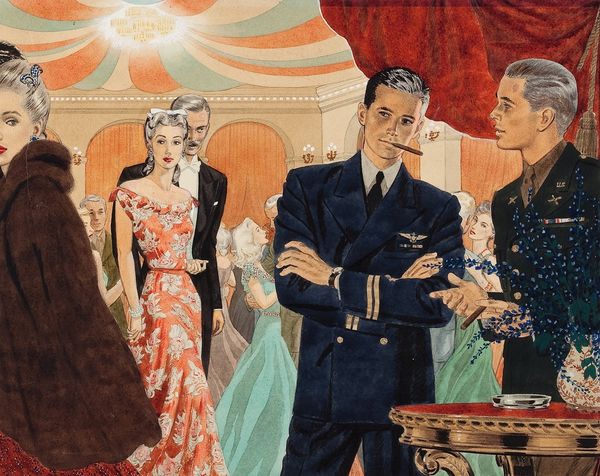
#
art-deco
# print
#
figuration
#
genre-painting
Copyright: Public Domain: Artvee
Curator: This elegant print, titled "L’Amour est aveugle," or "Love is Blind," comes to us from George Barbier in 1920, placing it firmly in the Art Deco movement. Editor: It’s incredibly chic, isn’t it? There’s this undeniable feeling of youthful optimism mixed with almost melancholy restraint. I am also wondering about this tension in how love can be seen to be frivolous and joyous but in reality is often far from either, it seems to be implying this as well. Curator: Absolutely. The title is so richly embodied in the central figure—a person blindfolded in the midst of a swirling game. Barbier masterfully employs symbols to emphasize the theme. Editor: The flock of white doves above... they symbolize what, exactly? Freedom, maybe? The futility of blind optimism within heteronormative courting perhaps? It certainly amplifies the central conceit, doesn’t it? The man can not 'see' yet still feels emboldened to chase a woman. Curator: That tension is essential! They hint at the traditional imagery associated with love, yet rendered in this stylized Art Deco manner, the figures become emblematic of the era's focus on style, luxury, and playful ambiguity. The setting also is symbolic. Is it indoor or outdoor? Is it an arena for courting? The birds that we are led to understand represents this ideal is actually flying between a 'fake' landscape. Is that right, it seems the perfect arena is actually fake. Editor: It really encapsulates that Roaring Twenties dichotomy: joy and hedonism contrasted with a dawning awareness of societal shifts post-war, that said awareness rarely benefitting those in marginalized populations, that has an uneasy undercurrent. The checkerboard floor beneath their feet amplifies that in it's traditional symbolism of shifting sands. The artist uses this stage as a commentary of an increasingly fickle world, and fleeting social rules that still did not really encompass all parts of society. Curator: Agreed, there is that element of precarity, that shifting dynamic captured here. Even with its whimsical elegance, "L'Amour est aveugle" feels less an affirmation of the blind pursuit of love, and more a poignant exploration of its complex, often illusionary, nature. Editor: And, to put a finer point on it, this artwork encapsulates that blind chase can lead to very specific places depending on how well the hunter has positioned their circumstances. Wealth and status are so easily equated to love during that period, still it is an evocative artwork, full of the same contradictions inherent to love.
Comments
No comments
Be the first to comment and join the conversation on the ultimate creative platform.
